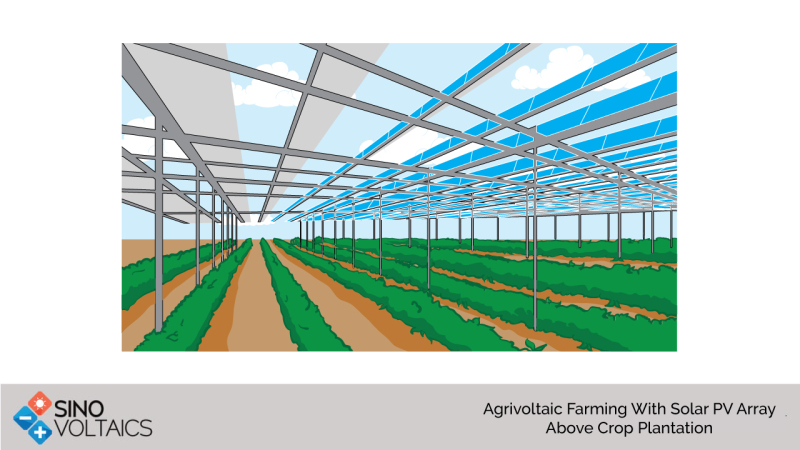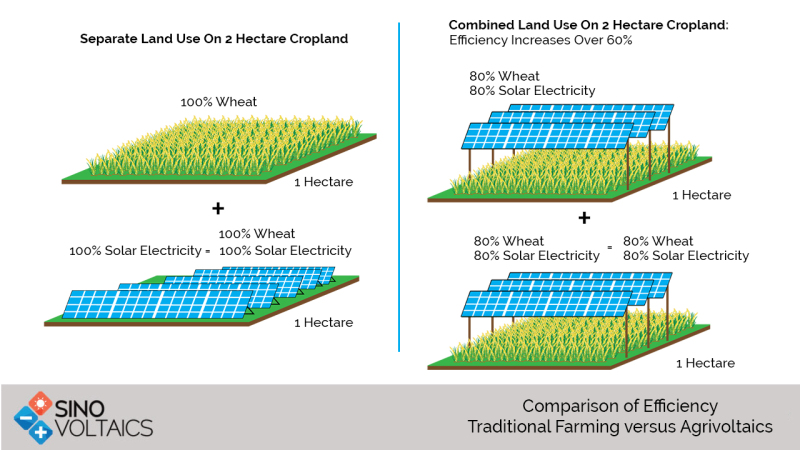Agrivoltaics
What is Agrivoltaics?
Agrivoltaics is co-developing the same area of land for solar energy as well as for agriculture. This new farming method combines Solar electricity generation with traditional farming on a common agricultural land i.e. An RE based system like Solar Photovoltaic system and a cropland can be together developed on the same agricultural land.
Historical Facts
The idea of producing solar energy and growing crops on the same land has been around for a while. For example Agrivoltaics has been massively implemented in Japan since 2004 and then, it was experimented in Asia and Europe as well. In recent years, however, the concept is gaining more traction, as the price of photovoltaic panels has gone down, interest in renewables has risen and financial pressures on small farmers have grown. And because installation of solar PV often displaces agriculture, causing tension between stakeholders, Agrivoltaics is being welcomed as a potential win-win solution as same land is being used for both practices.

Methods
There are three basic types of Agrivoltaic systems that are being actively followed: 1) Solar arrays with spaces in between them where crops can be planted 2) Solar array above crops (similar to shown in Fig.1) and a greenhouse type of solar array. For a successful Agrivoltaic system the following factors have to be taken into consideration so that Solar energy is absorbed well both by panels and the crops.
- Angle of solar panels i.e. Tilt angle
- Type of crop chosen (normally fruits are known to be suited to Agrivoltaics)
- Height of the panels
- Solar irradiation in the chosen area
- Climate of the area
Pros of Agrivoltaics
- Agrivoltaics compared to traditional farming: In traditional farming the financial risk is more because one is very much dependent upon the vagaries of weather. It is a known fact that a successful plantation is dependent on good weather conditions. For example, there should be the right amount of sun combined with good rains and some resilience to storms, strong winds etc. for a farmland to give a good yield. Agrivoltaic system solves climactic issues by enabling good source of sun and rain to the croplands .An example in this context is that the crops can benefit from the residual water that is used to wash the panels. In traditional farming separate water has to be arranged for watering the plants. In conclusion, in Agrovlotaic system farmers need not worry about climatic conditions and still gain a good income.
- Other benefits of Agrivoltaics: An experiment done at University of Arizona found that in Agrivoltaic system the crops provide a cooling effect to the solar panels hence making them more efficient. The panels also provide a shading provision to plants reducing their evaporation loss which reduces the water requirement for these crops.
- Agrivoltaic system gives better productivity than traditional farming: Fraunhofer Institute’s For Solar Energy Systems researchers showed that Agrivoltaic systems raise the land productivity by 60 percent. The below images (Fig. 2) show two scenarios. In the first scenario PV production and crop production are done on separate lands. In second scenario, scenario PV installation is co-shared with crop plantation leading to rise in productivity by 60 %.

Conclusion
Agrivoltaics system is proving to be financially fruitful and stress-free mechanism for the farmers. It has been proven in studies that PV installation could work along with traditional farming providing increased productivity and good income to farmers un-impacted by vagaries of nature.
